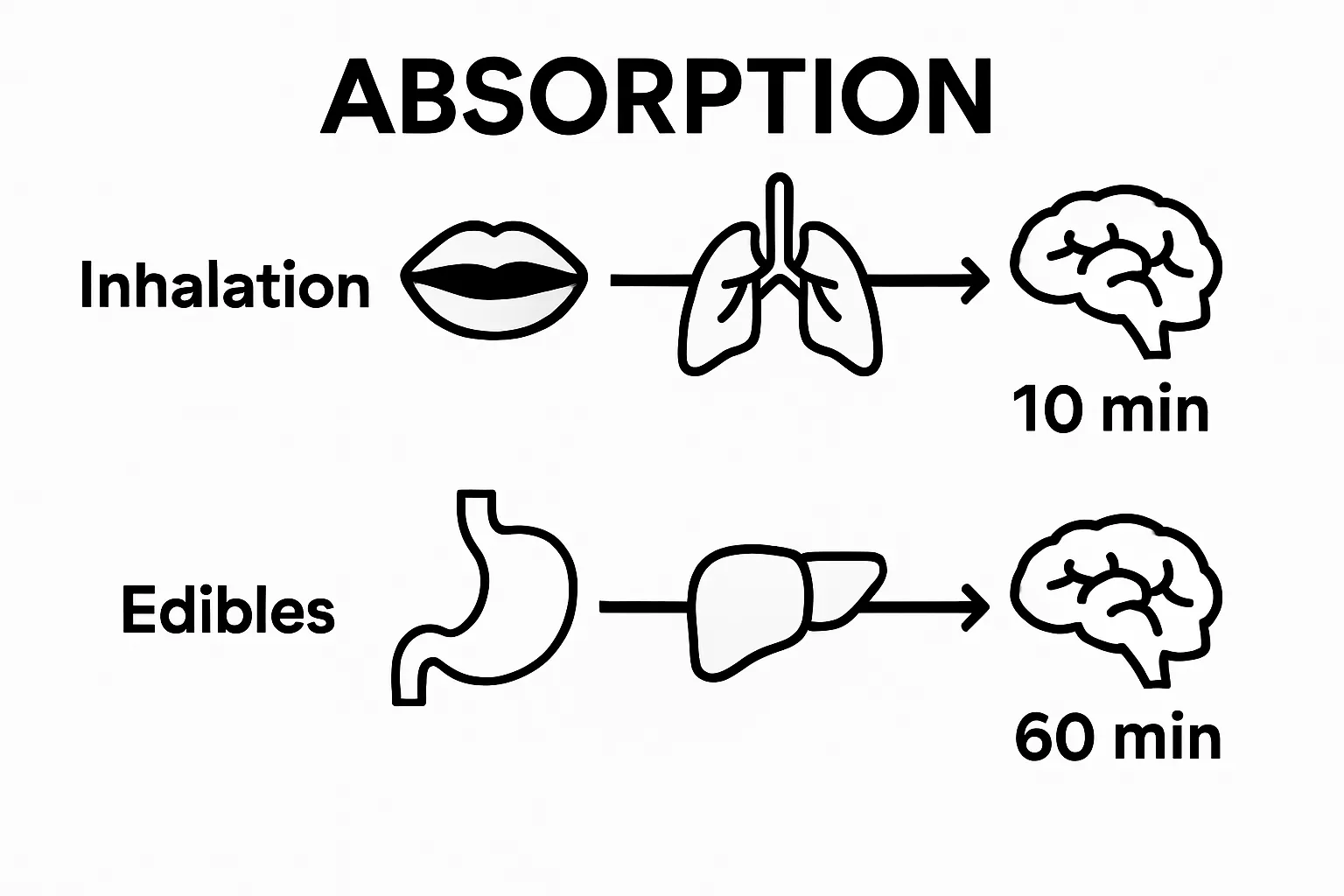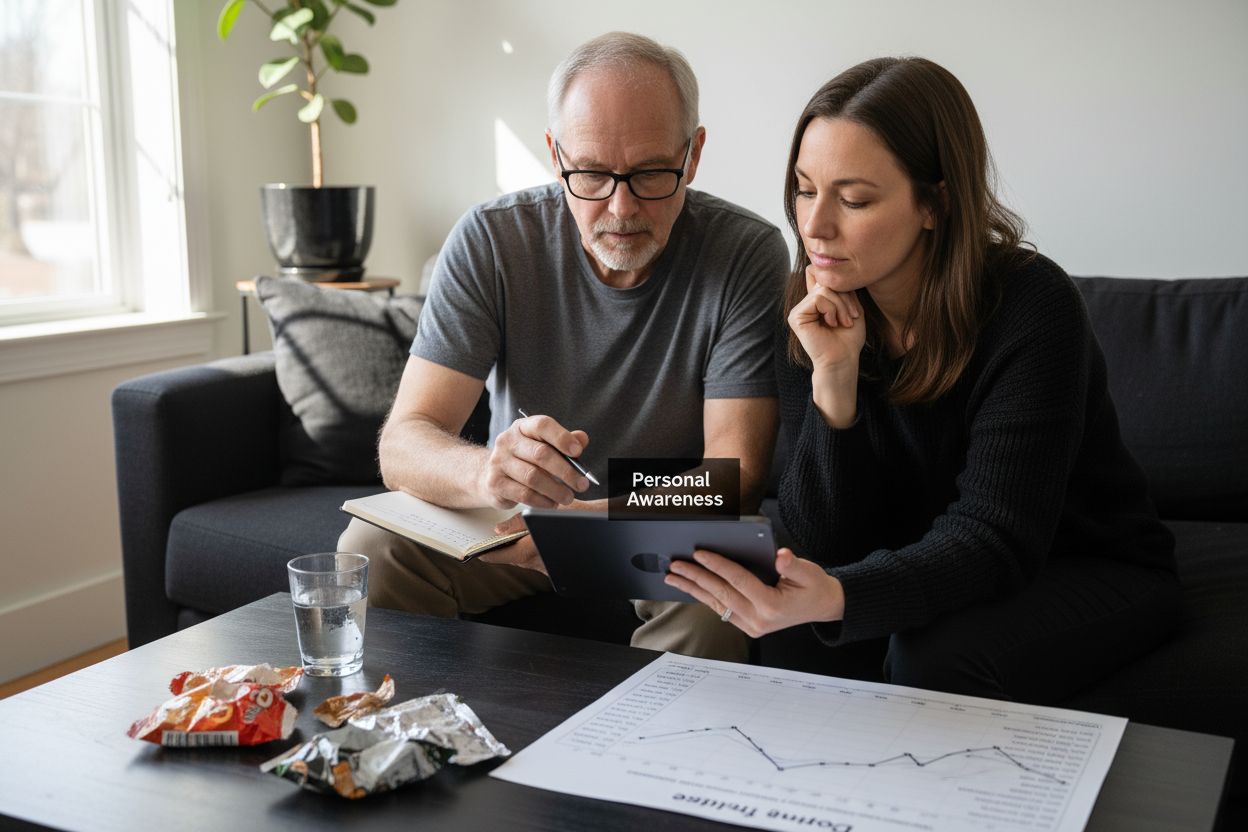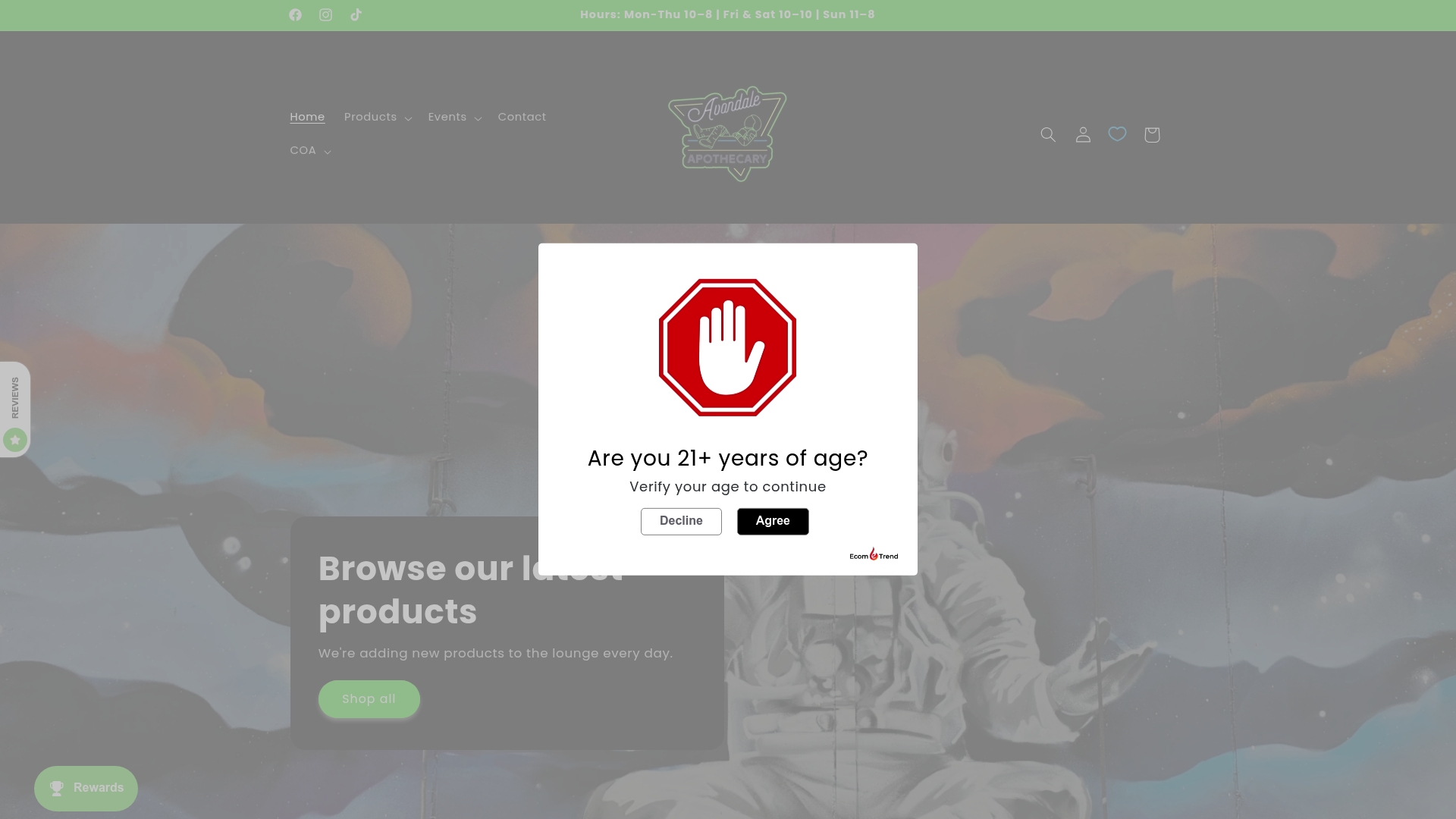Cannabis edibles are showing up everywhere and changing how people experience cannabis in everyday life. Most folks know that edibles hit harder, but did you realize that edibles can take 30 to 90 minutes to kick in and their effects often last up to 8 hours or more. That long wait time is not just a quirk. It flips expectations and means that understanding edibles is a lot less about the food itself and a lot more about what happens after you eat it.
Table of Contents
- What Are Cannabis Edibles And Their Effects?
- Why Knowing The Edibles Effects Timeline Is Important
- How Edibles Are Metabolized In The Body
- Factors Influencing The Duration Of Edible Effects
- Real-World Implications Of The Edibles Effects Timeline
Quick Summary
| Takeaway | Explanation |
|---|---|
| Patience is essential with edibles | Edibles take 30-90 minutes to kick in; avoid consuming more too soon. |
| Individual metabolism greatly affects effects | Your unique metabolic rate influences how quickly and intensely you feel the effects of edibles. |
| Food intake impacts cannabinoid absorption | Eating edibles on an empty stomach can speed up effects, while high-fat meals can enhance absorption. |
| Tracking personal responses is crucial | Keeping notes on how different dosages affect you helps manage your experience more effectively. |
| Public health implications are significant | Understanding the delayed effects of edibles is important for safety and regulation in society. |
What Are Cannabis Edibles and Their Effects?
Cannabis edibles represent a sophisticated method of consuming cannabis through food and beverage products infused with cannabinoids like THC and CBD. Unlike traditional smoking or vaping methods, edibles offer a unique consumption experience that transforms how cannabis enters and interacts with the human body. Learn more about our guide to cannabis edibles to understand the nuanced world of these products.
The Science Behind Cannabis Edibles
When cannabis is consumed as an edible, the digestive system becomes the primary pathway for cannabinoid absorption. Unlike inhalation methods where THC enters the bloodstream rapidly through lung tissue, edibles undergo a metabolic process in the liver. Here, delta-9 THC is converted into 11-hydroxy-THC, a more potent compound that crosses the blood brain barrier more effectively. This biochemical transformation explains why edibles produce more intense and longer-lasting effects compared to other consumption methods.
Understanding Cannabinoid Interaction
Cannabis edibles interact with the human endocannabinoid system through complex molecular mechanisms. The primary active compounds include:
- Tetrahydrocannabinol (THC): The primary psychoactive component responsible for euphoric sensations
- Cannabidiol (CBD): A non psychoactive compound known for potential therapeutic properties
- Terpenes: Aromatic compounds that contribute to flavor and potential physiological effects
The interaction between these compounds and an individual’s unique biochemistry determines the specific experience, making edibles a highly personalized form of cannabis consumption. According to research from the National Center for Biotechnology Information, individual metabolic variations can significantly influence how cannabinoids are processed and experienced.
By understanding these intricate scientific processes, consumers can approach cannabis edibles with greater knowledge and informed expectations about their potential effects and experiences.
The following table summarizes key differences between cannabis edibles and inhalation methods, helping readers compare how these consumption methods affect onset time, effect intensity, and duration.
| Method | Onset Time | Effect Intensity | Duration of Effects | THC Metabolism |
|---|---|---|---|---|
| Edibles | 30-90 minutes | More intense (11-hydroxy) | Up to 8 hours or longer | Processed in liver |
| Inhalation | Within minutes | Less intense (delta-9) | 1-3 hours | Absorbed through lungs |
Why Knowing the Edibles Effects Timeline Is Important
Understanding the precise timeline of cannabis edibles effects is crucial for responsible and safe consumption. The complexity of metabolizing cannabinoids through the digestive system means that the experience can vary dramatically from other cannabis consumption methods. Check out our cannabis edibles safety tips to ensure a well-informed approach.
Preventing Unintended Overconsumption
The delayed onset of effects is the primary reason why tracking the edibles timeline becomes critical. Unlike smoking or vaping, where THC enters the bloodstream almost immediately, edibles can take 30 to 90 minutes to produce noticeable effects. This delay frequently leads inexperienced users to consume additional doses prematurely, potentially resulting in uncomfortable or overwhelming experiences.
Patience is key when consuming cannabis edibles, as the body requires time to metabolize and process cannabinoids through the liver.
Individual Variability and Risk Management
Multiple factors influence an individual’s edibles experience, making a standardized timeline challenging. These personal variables include:
- Metabolic rate: Faster metabolism can accelerate cannabinoid processing
- Body weight and composition: Impacts how THC is absorbed and stored
- Tolerance levels: Previous cannabis experience affects individual sensitivity
- Food intake: Consuming edibles with or without other food can alter absorption
According to research published in the Journal of Analytical Toxicology, individual metabolic differences can cause significant variations in how quickly and intensely cannabinoids are experienced. This scientific understanding underscores the importance of carefully tracking personal responses and starting with low doses.
By comprehending the nuanced timeline of cannabis edibles, consumers can make more informed decisions, manage expectations, and prioritize their personal safety and comfort during cannabis consumption.
How Edibles Are Metabolized in the Body
The metabolic journey of cannabis edibles represents a complex biochemical process that transforms cannabinoids into powerful compounds within the human body. Explore our detailed guide on the role of THC in edibles to gain deeper insights into this intricate mechanism.
Digestive System Transformation
When cannabis edibles are consumed, they enter a sophisticated metabolic pathway distinct from other consumption methods. The digestive system becomes a critical processing center where cannabinoids are broken down and transformed. Unlike inhalation, which provides immediate absorption, edibles must first navigate through the stomach and liver. Hepatic metabolism plays a crucial role in converting delta-9 THC into 11-hydroxy-THC, a more potent metabolite that more effectively crosses the blood-brain barrier.
Biochemical Processing and Absorption
The metabolization of cannabis edibles involves several key stages that determine the overall experience:
- First-Pass Metabolism: The liver filters and processes cannabinoids before they enter the bloodstream
- Enzyme Conversion: Specialized liver enzymes transform THC into different metabolic compounds
- Lipid Solubility: Cannabinoids bind to fat molecules, influencing absorption and duration of effects
According to research published in the National Center for Biotechnology Information, the liver’s enzymatic processes create a significantly different physiological response compared to other cannabis consumption methods. This metabolic transformation explains why edibles produce more intense and prolonged effects, with the potential for a more comprehensive and extended cannabis experience.

By understanding these intricate metabolic processes, consumers can develop a more nuanced appreciation of how cannabis interacts with their body, ultimately leading to more informed and responsible consumption practices.
Factors Influencing the Duration of Edible Effects
The duration and intensity of cannabis edible effects are not uniform but depend on a complex interplay of physiological and environmental factors. Learn more about cannabis consumption safety to make informed decisions about your experience.
Physiological Variables
Individual metabolism plays a pivotal role in determining how long and how intensely cannabis edibles impact the body. Metabolic rate, body composition, and genetic predispositions create unique biochemical landscapes that significantly influence cannabinoid processing. Younger individuals typically metabolize compounds faster, while those with higher body fat percentages might experience prolonged effects due to THC’s lipophilic nature.
Consumption Context and Dietary Considerations
Multiple external factors can modulate the edibles experience:
- Stomach Contents: Consuming edibles on an empty stomach accelerates absorption
- Food Type: High-fat foods can enhance cannabinoid absorption and bioavailability
- Hydration Levels: Water intake impacts metabolic efficiency
- Prior Consumption: Tolerance and recent cannabis use alter effect duration
According to research published in the European Journal of Drug Metabolism and Pharmacokinetics, dietary conditions can dramatically alter cannabinoid pharmacokinetics, with fat-rich meals potentially extending absorption times and intensifying effects.
Understanding these nuanced factors empowers consumers to approach cannabis edibles with greater predictability and personal awareness, transforming consumption from a potentially unpredictable experience into a more controlled and intentional journey.
This table outlines the prominent physiological and external factors that influence the duration and intensity of cannabis edible effects, supporting safer and more predictable consumption outcomes.
| Influencing Factor | How It Affects Edible Experience |
|---|---|
| Metabolic Rate | Faster metabolism can speed up onset and clearance |
| Body Composition | Higher body fat may prolong effects due to THC storage |
| Tolerance Level | Established users may feel milder or shorter effects |
| Stomach Contents | Empty stomach accelerates onset; full or fatty meal prolongs |
| Hydration | Impacts metabolic efficiency and effect duration |
| Recent Cannabis Use | Frequent use lowers sensitivity, affecting duration |

Real-World Implications of the Edibles Effects Timeline
The complex edibles effects timeline extends far beyond individual consumption experiences, intersecting with broader societal considerations around safety, regulation, and responsible use. Check out our cannabis edibles safety guide to understand these nuanced implications.
Public Health and Safety Considerations
The delayed and prolonged nature of edibles creates significant challenges for public health professionals and policymakers. Impairment assessment becomes substantially more complicated when cannabis effects can emerge hours after initial consumption and persist far longer than traditional inhalation methods. This complexity directly impacts critical areas such as workplace safety, traffic regulations, and personal risk management.
Consumer Education and Harm Reduction
Understanding the edibles effects timeline becomes a critical component of comprehensive harm reduction strategies. Key considerations include:
- Dosage Awareness: Preventing accidental overconsumption through clear labeling
- Time-Based Consumption Guidelines: Establishing clear waiting periods between doses
- Individual Response Tracking: Encouraging personal documentation of effects
- Emergency Response Preparedness: Understanding potential adverse reaction management
According to research published in the Canadian Journal of Public Health, understanding the nuanced timeline of cannabis edibles is crucial for developing effective public health interventions and consumer protection strategies.
By recognizing the broader implications of edibles effects, society can move towards more informed, responsible, and scientifically grounded approaches to cannabis consumption and regulation.
Transform Your Edibles Experience With Trusted Cannabis Solutions
If you have ever felt unsure about how long cannabis edibles take to work or how long the effects will last, you are not alone. Navigating the unpredictability around the edibles effects timeline can lead to accidental overconsumption or frustration, especially when you are seeking a reliable and safe experience. Our educational insights highlight the science and personal factors that shape every edible journey. Now, discover how Avondale Apothecary can help you manage these uncertainties.

Take control of your cannabis edibles experience with our premium edible offerings. Each product in our curated Cannabis Edibles selection is backed by transparent lab results and clear dosage information, so you get consistency with every purchase. For those interested in exploring more options within the cannabis category, visit our updated Mushrooms collection or view our specialized Pre Rolls to suit your unique preferences. Experience the relief and confidence that comes with verified quality. Shop now at Avondale Apothecary and optimize your edible journey today.
Frequently Asked Questions
What are cannabis edibles and how do they differ from other consumption methods?
Cannabis edibles are food and beverage products infused with cannabinoids like THC and CBD, offering a unique consumption experience compared to smoking or vaping. Edibles are metabolized through the digestive system, leading to longer-lasting and more intense effects due to the conversion of THC into 11-hydroxy-THC in the liver.
How long does it typically take for the effects of cannabis edibles to kick in?
The effects of cannabis edibles can take anywhere from 30 to 90 minutes to become noticeable. This delay is due to the time required for the body to metabolize the cannabinoids through the digestive system.
What factors can influence the duration and intensity of edible effects?
Several factors can affect how long and how intensely cannabis edibles impact individuals, including metabolic rate, body weight and composition, tolerance levels, and whether the edibles were consumed on an empty stomach or with food.
Why is it important to track the effects timeline when consuming cannabis edibles?
Tracking the effects timeline is crucial to prevent unintended overconsumption. Due to the delayed onset of effects, users may be tempted to take additional doses before the initial effects are felt, leading to uncomfortable experiences. Understanding this timeline helps consumers manage their expectations and consumption safely.

